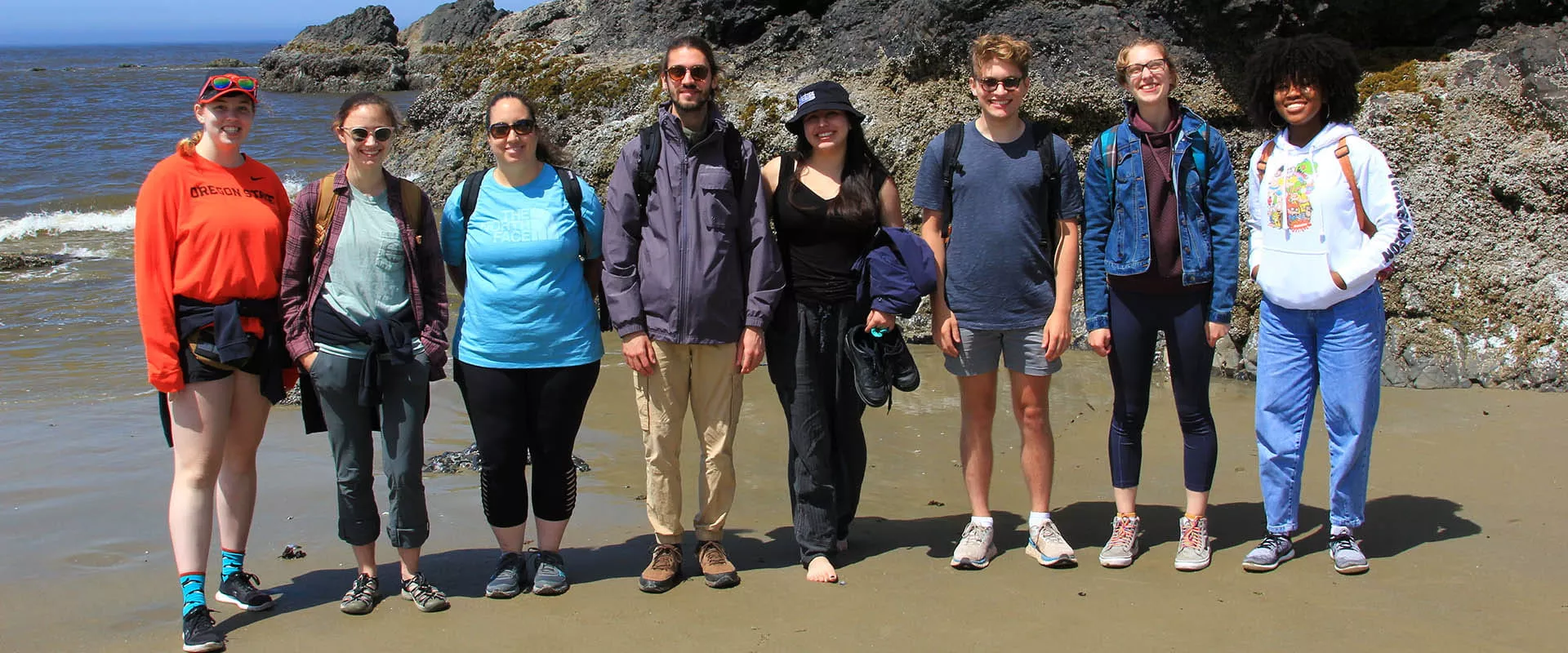
The College of Earth, Ocean, and Atmospherics Sciences at Oregon State University is proud to announce the availability of paid summer undergraduate research internships in geology, oceanography, and atmospheric and climate science.
Overview
Funded by the National Science Foundation, the Research Experience for Undergraduates (REU) program offers students the unique opportunity to work on individual research projects, and participate in group field trips, seminars and science colloquia over a nine week period at CEOAS under the guidance of university scientists, who serve as mentors. The summer REU program runs from June 15 to August 14, 2026. Successful applicants receive paid round-trip travel to Oregon, on-campus housing for the duration of the internship, and a weekly stipend.
Research Areas
CEOAS offers a broad range of undergraduate research opportunities and engineering applications in the physics, chemistry, geology, and biology of the Earth, oceans, and atmosphere. CEOAS research areas include ocean ecology, biogeochemistry, geomicrobiology, fisheries oceanography, physical oceanography, autonomous ocean observing, atmospheric science, climate modeling, marine geology, sedimentology, paleoclimatology, and geophysics. We welcome applications from students with backgrounds and interests in any of these areas, including atmospheric science, biochemistry, chemistry, computer science, earth science, engineering, environmental science, mathematics, microbiology, or physics majors.
If you want to apply what you've learned in the classroom to real world problems, then a research experience in the earth, ocean, and atmospheric sciences at CEOAS may be right for you. The earth, ocean, and atmospheric sciences are applied sciences – we draw on knowledge from a variety of academic backgrounds to solve real-world problems. Examples include:
- development and application of analytical chemistry techniques to parts-per-trillion measurements of individual species in complex solutions;
- physics of heat and mass transfer in solid and fluid earth materials;
- exploiting the physics of light to gather information about the oceans remotely;
- development of computer code to help assimilate and model large observational data sets;
- design and deployment of remotely operated autonomous sampling platforms in the ocean
A directory of potential mentors and undergraduate research areas appears below.
The Summer Program Experience
Students are paired with research mentors in their area of interest and gain experience in research design, data collection and analysis techniques, and interpretation and publication of results. Opportunities abound to gain field and lab experience within individual and related projects, including sea-going experience on a research vessel. There are numerous opportunities to interact with other scientists and students in CEOAS and other departments on the Corvallis campus and at the Hatfield Marine Science Center in Newport, through orientation, weekly seminars, group field trips, and project presentations.
Program Dates and Benefits
June 15 to August 14, 2026. Paid round-trip travel to Oregon, on-campus housing, and a stipend of $600/week are provided. The program also provides support for student travel to present at national scientific meetings and symposia.
Eligibility
Students pursuing an undergraduate degree at a two- or four-year college who are not graduating seniors are eligible to apply. Applicants must be U.S. citizens or permanent residents. We welcome students with varied life experiences, including first-generation, non-traditional, transfer, and community college students—no prior research experience is required to thrive here. We are particularly interested in applications from students who have had limited opportunities to conduct research but would like to pursue a career in the earth, ocean, and atmospheric sciences. We are also recruiting students attending community college and transferring to a four-year institution in the fall following the REU summer program.
Application and Deadline
The online application for summer 2026 is now open. Applications are due February 15, 2026 at 11:59 pm PST.
Application for the summer REU program
On your application, please list the faculty mentors and Potential Projects that interest you. See the list below. Also browse our listings of past REU projects:
The application will ask you to provide the name, title and institution, and contact information for two professional references. Applicants are responsible for contacting their references and asking them to submit their recommendations. Please ensure that your references submit their recommendations by 11:59 pm PST on February 15, 2026 to be included in your application.
APPLICATION REVIEW UPDATE: We will run a Summer 2026 program, but we are not sure the cohort size as we are awaiting grant funding decisions. We will keep applicants updated as we learn more by late February or early March. All applicants will be notified when the selection process has completed. All OCE-funded REU Sites must give students a minimum of March 15th or LATER to accept their offers regardless of the application deadline. In other words, March 15th is the earliest possible deadline for student acceptance (later deadlines are fine).
Questions
For more information specific to the CEOAS internships, please contact Kelsey Lane. Summer research internships in marine and estuarine science are also available at OSU's Hatfield Marine Science Center. For more information on these internships, visit the Hatfield Marine Science Center website.
Program Funding
Funding for this REU site is provided by the National Science Foundation’s Division of Ocean Sciences located in Alexandria, VA. (NSF OCE-2148655) The NSF contact for this program is Elizabeth Rom. NSF does not handle REU applications; please contact each REU site directly for application information. All students who are offered a position at this REU site have until March 15th or later to accept or reject the offer. This means the earliest any applicant can accept a position is March 15.
Directory of Potential Mentors and Undergraduate Research Areas
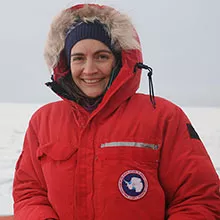
Kim Bernard
2007, Ph.D. Marine Biology, Rhodes University
2003, M.S. Marine Biology, Rhodes University
2000, B.S. Double Major in Zoology and Environmental Science, Rhodes University
Interests
My research focuses on the ecology and physiology of zooplankton – particularly krill – in polar and coastal upwelling ecosystems. Work in my lab spans individual to ecosystem scales and integrates field observations, laboratory analyses, active acoustics, ROV-based surveys, and quantitative approaches. A central goal is to understand how climate change and other anthropogenic pressures alter zooplankton populations, behavior, and the marine food webs that depend on them.
Potential Projects
Possible undergraduate research directions in my lab include:
- analyzing krill and zooplankton distribution patterns using active acoustic surveys or ROV-based observations;
- investigating seasonal changes in krill condition or energetic content using laboratory techniques;
- processing and classifying zooplankton from ZooScan image datasets, including archived samples from Antarctica and other regions;
- examining zooplankton community responses to marine heatwaves and other climate anomalies.
Projects may involve computational analysis, laboratory work, or data synthesis depending on ongoing efforts and student interests.
Background and Skills Sought in Potential Undergraduate
Motivated, curious students with strong attention to detail. No prior research experience is required; all field, analytical, and computational skills are taught in the lab. An interest in marine ecology, climate change, or quantitative analysis is important.
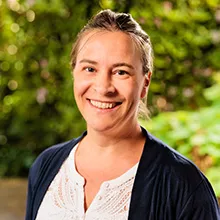
Kristen Buck
2006, Ph.D., Ocean Sciences, University of California Santa Cruz
2001, B.S., Chemistry, Pacific Lutheran University
2001, B.A., French, Pacific Lutheran University
Interests
Research in my lab is focused on the cycling of bioactive trace metals (Fe, Cu, Ni, Co, Mn, Zn, Cd, Pb) in marine ecosystems. We specialize in measuring the chemical forms of metals in seawater, and in exploring feedbacks between trace metal chemistry and phytoplankton growth in the marine environment.
Potential Projects
Examples of potential projects include measuring the chemical forms of micronutrient (Fe, Ni) and toxicant (Cu) trace metals in seawater samples collected from field surveys and phytoplankton growth experiments, conducting laboratory experiments to advance techniques for characterizing metal speciation, and analyzing metal stoichiometry in biological particles. We have seawater and/or particle samples archived from projects conducted in the North Pacific, North Atlantic, Gulf of Mexico, and Southern Ocean available for projects.
Background and Skills Sought in Potential Undergraduate
Enthusiasm for laboratory research at the interface of chemistry and biology. Experience in analytical chemistry (whether course- or research-based) is preferred.
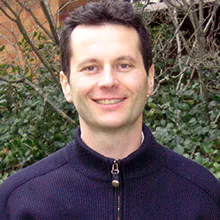
Lorenzo Ciannelli
2002, Ph.D., Aquatic Fishery and Sciences, University of Washington
1993, Laureate, Biology, Universita' Degli Studi di Napoli "Federico II", Italy
Interests
My primary research focus is on fisheries oceanography and marine ecosystem ecology. I am interested in studying the causes of temporal and spatial variations of marine populations. Most of my work revolves around early life stages of fish, as variability at the population level is closely linked to egg, larval and juvenile survival in marine organisms. Through these investigations I combine quantitative analyses (i.e., mathematical and statistical modeling) with more field and experimentally oriented approaches.
Potential Projects
My primary research focus is on fisheries oceanography and marine ecology. I study the causes of temporal and spatial variation of marine populations, and the conservation implications of the ensuing findings. Most of the work that we conduct is from data collected by federal management agencies (e.g., NOAA) in sub-arctic and temperate systems in both the North Pacific and the North Atlantic, and involves a fair amount of computational analysis. The goal of these analyses is to gain ecological understanding and provide scientifically sound advice in management and conservation issues. Methods that I use in my research include statistical analyses of long spatio-temporal data series, typically from surveys and other monitoring programs, combined bio-physical modeling for assessing distributions of fish with dispersal life history stages.
Background and Skills Sought in Potential Undergraduate
Undergraduate students working in my lab have a strong desire to use quantitative and analytical methods in order to make ecological inference.
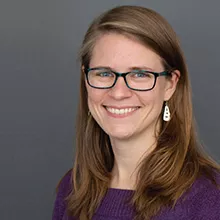
Emily Eidam
2017, Ph.D., Oceanography, University of Washington
2013, M.S., Oceanography, University of Washington
2010, B.S., Geological Sciences, University of Alaska Anchorage
2008, B.S., Civil Engineering, University of Alaska Anchorage
Interests
Sediment transport rates and processes primarily in coastal systems (and some fluvial-estuarine systems as well); short-timescale deposition (using isotope tracers); novel instrument development
Potential Projects
Use archived sediment cores housed at OSU's state-of-the-art Marine and Geology Repository to study sedimentation in polar environments and how it is affected by climate change. Research topics include isotopic analyses to determine deposition rates; changes in deposition through time, differences between shelf, slope, fjord, and lake environments; comparison of Arctic and Antarctic cores.
Background and Skills Sought in Potential Undergraduate
Curiosity in coastal systems and technology; some experience with coding (Matlab or Python); interests in lab, field, and data analysis work

Hannah Glover
2022, Ph.D., Oceanography, University of Washington
2013, B.A., Earth and Oceanographic Science, Bowdoin College
Interests
My research focuses on coastal sediment transport, morphology, and resilience. I collect in-situ measurements of waves, currents, and bathymetric change, and I develop techniques for using fiber-optic sensing to understand the coastal ocean.
Potential Projects
Interested in learning about using fiber-optic cables to sense pressure and temperature in the coastal ocean? In October 2025, we collected measurements on a cable buried in Rockaway Beach, OR along with measurements of bathymetry/topography. You will examine changes in cable temperature as a proxy for cable burial and beach profile change.
Background and Skills Sought in Potential Undergraduate
Background in the earth sciences (geology, oceanography, physics, similar). Enthusiasm for beaches. Experience with programming in Python or Matlab.
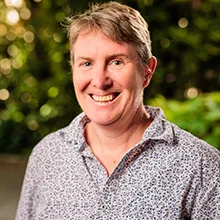
Jenny Hutchings
Ph.D., Remote Sensing, University College London
B.S., Physics, University College London
Potential Projects
We are looking for aspiring polar scientists with backgrounds in physics, mathematics, engineering or earth sciences to participate in a NASA funded project aiming to improve models of sea ice motion which may result in improved understanding of the drivers of recent Arctic sea ice changes. The Arctic Ocean sea ice cover has lost roughly half it’s mass over the last 30 years. This highly mobile and constantly evolving icescape insulates the Arctic Ocean from the atmosphere and radiates the suns energy back to space which, along with seasonal snowpack on adjacent continents and ice caps in Greenland and Antarctica, helps cool the planet. The loss of Arctic sea ice results in a positive feedback and participates in the amplification we see in surface temperature change within the Arctic over the last century. To start this feedback loop there needs to be a trigger, sea ice transport can precondition summer melt. You will investigate how this transport occurs in winter through analysis of sea ice cracking and subsequent deformation. Together with satellite remotely sensed imagery and drifting buoy data you can build a picture of the forces that result in sea ice motion. There is much to investigate, and a variety of projects we can offer ranging from structural analysis of sea ice making use of your geology background, satellite data analysis combined with ice drifting data to identify how sea ice drift responds to wind forcing and collation of these analyses to investigate if sea ice mass loss is impacting sea ice drift.
Background and Skills Sought in Potential Undergraduate
Interest in the Earth’s polar regions and a background in physics, mathematics, engineering, or earth sciences

Andrea Jenny
Interests
Our group studies clouds, how clouds shape Earth’s climate, and how clouds might change as the planet warms. We combine satellite observations, climate model experiments, and theoretical tools to better understand the physical processes that control clouds and their effects on climate. This work has important implications for reducing uncertainty in future climate projections.
About the Project
This project spans two tasks: scientific research and science communication. In this first, you’ll use Python coding (no prior experience required—we’ll teach you!) to analyze satellite data over the tropical oceans to learn about how and why cloudiness varies across the tropical rain band. In the second task, you’ll work with our college’s outreach team to turn what you’re researching into a hands-on activity kit for middle and high school students. The goal is to teach the big-picture of how clouds can both warm and cool the climate, in a fun and accessible way. This role is ideal for students who not only want to learn how to work with real climate data, but also care deeply about making science engaging, understandable, and meaningful to broader audiences.
Background and Skills Sought in Potential Undergraduate
A curious and motivated student who is interested in Earth science, atmospheric science, environmental science, physics, math, and/or science education. The successful applicant should have strong attention to detail, a willingness to work independently and collaboratively, and an interest in both data analysis and science communication. No prior experience with coding, climate data, or clouds required—we’ll provide all the training you need. However, strong quantitative and science skills are preferred!

Andone Lavery
1999, Ph.D., Physics, Cornell University
1995, M.Sc., Physics, Cornell University
1992, MMath, Applied Math and Theoretical Physics, Cambridge University
1991, Mathematics, Cambridge University
Interests
Acoustical oceanography, ecosystem and fisheries acoustic, development of acoustic instruments and associated platforms for environmental acoustic monitoring.
Potential Projects
Examples of potential projects include:
- Analyzing acoustic data from the seamounts acoustics experiments to understand the distribution of biological targets – specifically to understand the impact of currents on Target Strength.
- Using a holographic camera in the laboratory to look at the structure of turbulence.
- Setting up an acoustic microphone array to understand acoustic propagation through atmospheric turbulence in the presence of temperature fluctuations.
- Analysis of hydrophone data at the PACWAVE and OOI hydrophones to detects “ATOC-type” signals from a seafloor-mounted beacon (~810 m depth) off the north shore of Kaua’i. The variability of the acoustic time of arrival can be related to basin scale changes in sound speed and ocean temperature, which can be related to climate variability.
- Development of acoustic calibration software for automatic detection of targets and setting of calibration parameters.
Background and Skills Sought in Potential Undergraduate
An interest in engineering, oceanography, physics, and/or acoustics. Experience with a programming language like MATLAB or Python, and a desire to learn about ocean data and instrumentation.
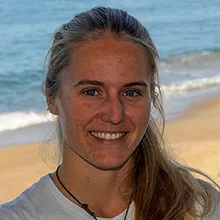
Astrid Leitner
2018, PhD Biological Oceanography, University of Hawai’i Manoa
2012, BS Marine Biology, University of California, Santa Cruz
2012, BS Earth Sciences, University of California, Santa Cruz
Interests
Research in the Ecological Oceanography Lab sits at the intersection of the fields of marine ecology, biological oceanography, geological oceanography, and physical oceanography. We use underwater cameras and robots in combination with other tools like fisheries acoustics, multibeam bathymetry, and a variety of oceanographic sensor data to investigate what oceanographic mechanisms influence the distribution and behaviors of both predators and prey in the ocean. We focus on the deep sea and on steep submarine features like seamounts, submarine canyons, pinnacles, and slopes.
Potential Projects
Analyzing predator-prey interactions on the rim of Monterey Submarine Canyon. In this project you would analyze underwater video footage from a seafloor video lander perched at the top of a steep submarine canyon wall. Using video annotation software you will gain experience identifying and quantifying animals, building a database of observations, and subsequently conducting statistical and ecological analyses.
Background and Skills Sought in Potential Undergraduate
Enthusiasm for learning to identify new species. Enthusiasm for studying animal behavior and interactions. Willingness to sit in front of a computer in a video lab/dark room for long hours. Basic coding in R or python for database management (reading in data, extracting specific data subsets, reformatting data, merging different dataframes) and basic-advanced statistics. Some background knowledge in ecology or marine biology or oceanography.
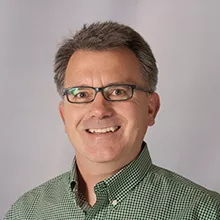
Jim Lerczak
2000, Ph.D., Oceanography, Scripps Institution of Oceanography, UC-San Diego
1991, M.S., Physics, University of Washington
1988, B.A., Physics, Williams College
Interests
Coastal physical oceanography including the study of internal waves and buoyant plumes from rivers; estuarine oceanography including the dynamics that drive the three-dimensional circulation and the mechanisms that transport and disperse water-borne materials in estuaries; physical/biological interactions which influence transport and dispersal of larvae.
Potential Projects
Analyze data to determine the transport of heat by coastal internal waves. Develop numerical tools to study transport and dispersion of water-borne materials by internal waves. Analyze data to quantify transport of sediments in an estuary. Analyze ocean measurements collected from tagged marine birds.
Background and Skills Sought in Potential Undergraduate
Background and interest in physics. Experience in data analysis using programming/graphics software such as Matlab.
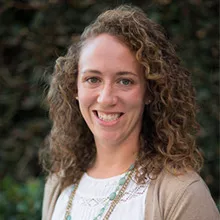
Erin McParland
2019, Ph.D., Marine Biology and Biological Oceanography, University of Southern California
2013, B.S., Marine Science, emphasis in Chemical Oceanography, Minor in Chemistry, University of South Carolina
Interests
My research aims to better understand organic carbon and macronutrient cycles by directly linking organic molecules with microbial producers and consumers in marine ecosystems. I am particularly interested in how organic sulfur molecules may play an unrecognized role in these interactions. I primarily rely on high-resolution mass spectrometry (metabolomics) to probe the metabolisms of marine microbes, and additionally utilize bioinformatic techniques to query the genetic code of the same microbes.
Potential Projects
Example projects include measuring metabolite composition of samples collected in phytoplankton or bacteria culturing experiments, or in archived samples from the Pacific Ocean, conducting analytical experiments to develop techniques for sulfur quantification and characterization, or mining large marine exometabolomic datasets.
Background and Skills Sought in Potential Undergraduate
Microbial biogeochemistry poses interdisciplinary questions and applicants could have interests in learning or previous experience with one or more of the following: wet-lab chemistry, analytical chemistry, microbial culturing, or computation skills (esp. R and command line).

Brodie Pearson
2015, Ph.D., Atmospheric, Oceanic, and Climate Science, University of Reading
2011, M.Phys. (Master of Physics), University of Oxford
Interests
I study how ocean water moves and mixing using computer models. My research ranges from exploring small-scale turbulence near the ocean surface, where water interacts with the atmosphere or sea ice, to understanding how massive ocean eddies move water from place to place. Our group is particularly interested in utilizing modern advancements in computing hardware (GPUs) and software, to conduct faster and more efficient simulations/analyses.
Potential Projects
Project 1 (Large-scale): Investigating how tracers (e.g., temperature, microplastics) are stirred by mesoscale eddies using numerical simulations. Project 2 (Large-scale): Using new, unprecedented (SWOT) satellite data to map properties of ocean mesoscale turbulence. Project 3 (Small-scale): Applying novel analysis to high-resolution observations of upper ocean mixing to see if we can measure energy transfers between scales. Project 4 (Small-scale): Simulating upper ocean mixing in regions of sea ice and surface waves
Background and Skills Sought in Potential Undergraduate
Interest in physics, mathematics, Earth science, or engineering. Some experience with data analysis and analysis software (i.e., Python, MATLAB, Julia, R).
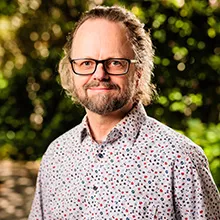
Andreas Schmittner
1999, Ph.D., Physics, University of Bern, Switzerland
1996, Diploma Physics, University of Bremen, Germany
Interests
I study Earth’s climate system with a focus on the ocean, its physics (e.g. circulation), biogeochemical cycles (e.g. carbon), and interactions with other components of the climate system (e.g. ice sheets). My work covers both paleoclimate changes, current variability and possible future projections. I develop computer models and use them together with observations and paleoclimate data to better understand the climate system.
Potential Projects
Improving climate models, analyzing climate model output, comparing models and observations, synthesizing and analyzing paleoclimate data
Background and Skills Sought in Potential Undergraduate
Good math and physics background required. Interest in the climate system and coding.
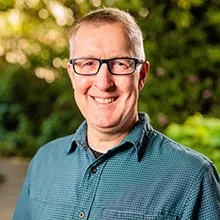
Kipp Shearman
1999, Ph.D., Oceanography, Oregon State University
1993, B.S., Aeronautical Engineering, University of Colorado
Interests
My research interest is the study of physical processes in coastal ocean. Big, small, long, short, high-frequency, low-frequency, stratified, unstratified, rotating, nonrotating, forced, unforced, surface, bottom, middle - I don't care. If it's physics and coastal, I'm interested. I am most interested in understanding the dynamics of the evolving structure of the density field over the shelf. How it is affected by external forcing and how it in turn affects the circulation within the coastal ocean. My approach is observational, using innovative sampling techniques - such as Autonomous Underwater Vehicles (AUVs) - coupled with modeling and analysis, to explain fundamental physical processes.
Potential Projects
Oregon Shelf Glider Endurance Observation: Since 2006, we have maintained a small fleet of AUV gliders operating on the Oregon shelf sampling the temperature, salinity and velocity structure during the entire year.
Submesoscale Dynamics: Coordinated ship-based and and AUV glider-based surveys of fronts in the ocean. We are studying the finescale interleaving of warm, salty water and cooler, fresher water, focusing on frontal processes that occur in the presence of strong wind-forcing and extremely energetic internal waves (tides or inertial). We have data collected at locations all over the world: Gulf Stream, Taiwan, Vietnam, Gulf of Mexico ...
Background and Skills Sought in Potential Undergraduate
Interest in AUV sampling, data analysis, programming (matlab or python), math and physics coursework.

Alyssa Shiel
2010, Ph.D., Oceanography, University of British Columbia
2003, B.S., Environmental Science, University of Arizona
Interests
Biogeochemical cycles of metals; pollution; isotope fingerprinting; biomonitors; environmental archives; sediments; soil; lichen; moss; oysters; seaweed.
Potential Projects
REU students working with Dr. Shiel will gain experience with environmental sampling (e.g., oysters, sediment, moss), preparing samples for analysis in the lab, measuring metal concentrations and isotopic compositions using mass spectrometers, and interpreting and presenting their results. Projects this year may include investigations of bioaccumulation of metals by seaweeds, metal levels in seafood products, and the impact of aging and deteriorating lead paint used on brides on coastal environmental levels. Examples of past projects in Dr. Shiel's lab include reconstructing a history of lead sources in China over the last 4000 years by measuring lead in lake sediments, evaluating the impact of smelter emissions in Washington and British Columbia by measuring metal levels in lichens, assessing metal levels and sources in the Columbia River Gorge National Scenic Area by measuring lead in lichens.
Background and Skills Sought in Potential Undergraduate
Dr. Shiel is looking for students who are excited about these types of research projects and other projects on her website, enjoy spending time both in the lab and the field, have some background in chemistry, and are seeking hands-on experience with analytical techniques, such as ICP-MS.

Joe Stoner
1995, Ph.D., Resources Minérales, Université du Québec à Montréal
1991, M.S., Geology, University of Florida
1987, B.S., Geology, University of Florida
Interests
Sediments magnetism including paleomagnetism, environmental magnetism, geomagnetism, sedimentology, stratigraphy, paleoclimatology, paleoceanography.
Potential Projects
At the end of the last ice age regional sediment supply to the marine environment was dominated by material sourced from drainage of the southern Cordilleran Ice Sheet (CIS). Accumulation of material in the marine environment changed both in character and composition during and after the ice sheet retreat. The student involved in this REU project will sail on a 7-day research cruise on the R/V Oceanus from June7th-13th, 2020. The student will assist in the collection of sediment cores, and collection of physical properties and CT-scan imagery data. These data will be used to generate a basic stratigraphy for recovered cores, informing on how the lithology and depositional environment on the margin has changed since the last glacial maximum.
Background and Skills Sought in Potential Undergraduate
Interest in sea-going field work on a research vessel, appreciation of mud, experience with or an interest in learning about sedimentary geology, interest in Earth’s past climate and/or magnetic field.

Justin Wettstein
2007, Ph.D., Atmospheric Sciences, University of Washington
2007, M.P.A., Evans School of Public Affairs, University of Washington
2003, M.S., Atmospheric Sciences, University of Washington
1998, M.S., Environmental Engineering and Science, Stanford University
1997, B.S., Environmental Engineering, University of Oklahoma
Interests
Large-scale climate and atmospheric dynamics, climate variability and change, atmosphere-ocean-ice interactions, and climate impacts and responses in natural and managed systems.
Potential Projects
A) Novel analyses of North Pacific ocean-atmosphere variability. This project applies new techniques to assess the coupling between ocean and atmosphere over the North Pacific. Physical controls on the evolution of North Pacific variability are incompletely understood, but this variability impacts marine ecosystems as well as downstream climate and weather. B) Atmospheric response(s) to a changing Arctic. Arctic climate change is affecting global climate through the atmosphere. This project seeks to improve our understanding of the atmospheric response by isolating the atmospheric response from the myriad other coupled climate interactions.
Background and Skills Sought in Potential Undergraduate
Required: intellectual curiosity in climate dynamics and a particular interest in the research areas and / or potential projects described above. Preferred: some background in atmosphere and / or ocean science and some experience with analytical computing (e.g., Matlab or Python).

Greg Wilson
Interests
The physics of nearshore ocean waves, and their role in reshaping ocean coastlines through sediment transport. My group develops new sensing techniques to observe processes occurring in the turbulent shallow water just off the shoreline (less than 10 m water depth). We use experimental data to develop theories for sediment transport processes, with broader applications to predicting how coastlines evolve over time.
Potential Projects
I'm looking for students with strong quantitative skills and an interest in ocean technology, to assist in developing and testing new sensing techniques for sediment transport. Projects for the summer will likely focus on experiments with MHz-frequency acoustic sonar. You will use/build skills in underwater acoustics, signal processing, and data analysis (e.g. Matlab, Python, Julia). The research will be mostly lab-based, with experiments in Wilson's lab at OSU/Corvallis.
Background and Skills Sought in Potential Undergraduate
The ideal candidate will be interested in physics and math as they apply to environmental sciences, and have some experience with computer programming. Coursework in introductory calculus is required; knowledge of differential equations and Fourier methods would be assets.